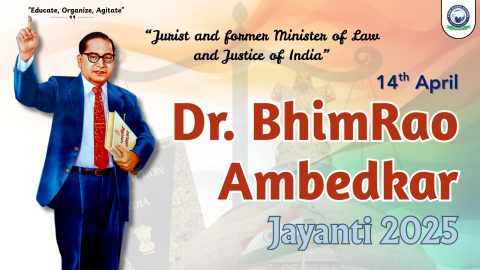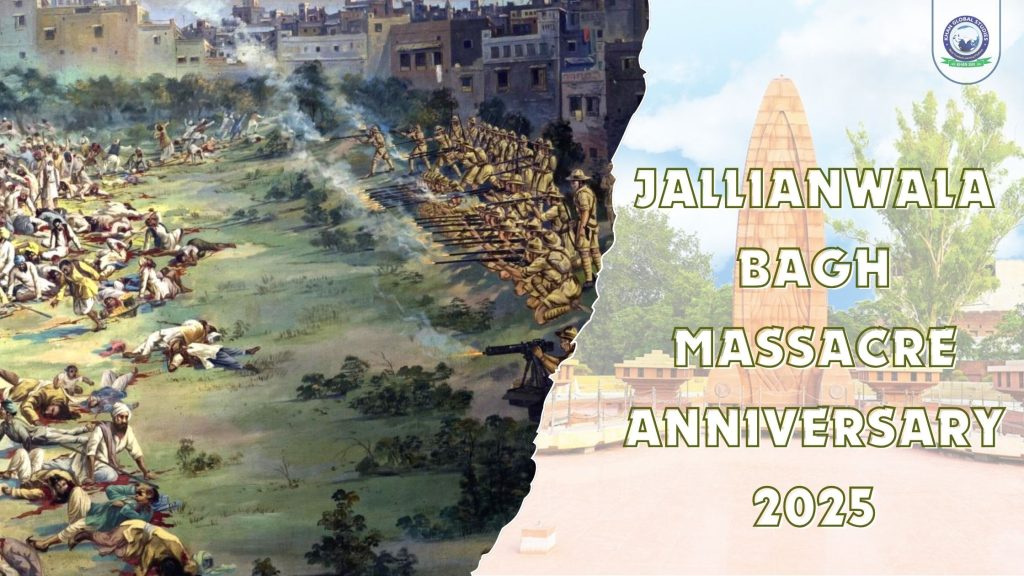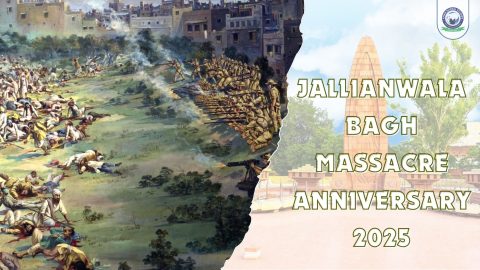Towards the end of the 19th century and the beginning of the 20th century, opposition to British rule in India began to intensify. During World War I (1914–1918), India extended economic and military support to Britain with the hope of gaining political concessions in return. However, instead of rewards, the British government imposed the Rowlatt Act in 1919.
- Key Provisions of the Rowlatt Act:
- Any Indian could be arrested without any stated reason.
- Detention without trial for an indefinite period was allowed.
- Freedom of the press was severely restricted.
This law was a direct violation of the fundamental rights of Indians. In response, Mahatma Gandhi launched a nationwide Satyagraha movement. Punjab, in particular, saw intense protests. On April 10, 1919, two popular leaders of Amritsar — Dr. Saifuddin Kitchlew and Dr. Satyapal — were arrested, leading to widespread outrage among the people.
April 13, 1919 – Baisakhi and Brutality (The Massacre Day)
April 13, 1919, was the day of Baisakhi, an important festival for farmers and the Sikh community. Thousands of people had gathered in Amritsar to celebrate the festival and attend a public meeting.
A large, peaceful assembly was held at Jallianwala Bagh to protest against the Rowlatt Act and the unjust arrest of local leaders. The gathering did not have official permission, but people were unaware that it would provoke a violent response.
Upon hearing about the meeting, General Dyer considered it an act of rebellion. Without issuing any warning, he marched into the garden with his troops, sealed the only exit, and ordered open fire on the unarmed crowd.
The Brutal Firing
Jallianwala Bagh was surrounded by high walls with just a narrow entrance — the same one used by Dyer and his soldiers. When the firing began, people had no way to escape.
- Key Details:
- Over 1,650 bullets were fired.
- The shooting lasted for 10 minutes continuously.
- People were trapped with no exit route.
- Over 120 people jumped into a well in panic and died.
- Bullet marks are still visible on the garden walls.
This was a cold-blooded, pre-planned massacre. General Dyer later claimed, “It was necessary to teach the Indians a lesson,” and that fear was needed to suppress any future opposition to British rule.
Death Toll and Casualties
The exact number of dead and injured remains disputed even today.
| Source | Reported Deaths |
| British Government | 379 people |
| Indian National Congress | Around 1,000 people |
| Local Eyewitnesses | More than 1,500 |
Additionally, over 1,200 people were injured, many of whom were left permanently disabled.
The British government deliberately downplayed the numbers to avoid international criticism. In contrast, the Congress conducted its own inquiry and published a report indicating a much higher death toll.
British Response
In the aftermath, the British government took a few symbolic actions against General Dyer:
- A Hunter Commission was established to investigate the incident.
- Dyer admitted, “If I had more bullets, I would have killed more.”
- Though the commission held him responsible, he was never punished.
- In Britain, Dyer was hailed as a “national hero,” and many even raised funds in his honor.
- Eventually, he was recalled from India and removed from military service but lived a comfortable life thereafter.
This incident reflected the hypocrisy and double standards of British justice.
Udham Singh’s Revenge
Udham Singh was present at Jallianwala Bagh during the massacre and witnessed the horror with his own eyes. He vowed to take revenge.
- He waited 21 years to fulfill his promise.
- On March 13, 1940, in Caxton Hall, London, he shot and killed Michael O’Dwyer, the former Governor of Punjab.
- Upon arrest, he said, “This is not revenge, this is justice.”
- He was hanged on July 31, 1940.
- He signed his name as Ram Mohammad Singh Azad — a symbol of India’s religious unity.
Udham Singh remains an icon of courage and sacrifice for Indian youth.
Jallianwala Bagh Memorial (Then and Now)
- In 1951, the Government of India declared Jallianwala Bagh a national memorial.
- It was inaugurated in 1961 by President Dr. Rajendra Prasad.
- The garden still contains the well, bullet marks, a memorial plaque, and a museum.
- In 2021, the site underwent renovation, but some criticized the modernization for diluting the authenticity of the tragedy.
Every year on April 13, a tribute ceremony is held where people from across the country gather to honor the martyrs.
Impact on India’s Freedom Movement
- Mahatma Gandhi severed all ties with the British government and launched the Non-Cooperation Movement.
- Rabindranath Tagore returned his Knighthood in protest.
- The massacre fueled deep hatred and anger among the Indian people.
- It inspired the revival of revolutionary activities across the country.
- The Jallianwala Bagh massacre exposed the brutal face behind Britain’s so-called “just rule.”
A Date That Shook a Nation
April 13 is not just a date — it is a symbol of national awakening. It reminds us of the immense sacrifices made for India’s independence. It is our responsibility to preserve this legacy and protect the democracy and freedom that our forefathers fought so bravely to secure.




